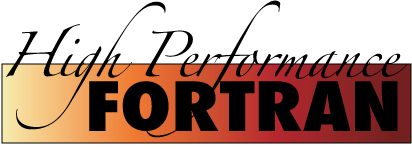
| [ HPF Home | Versions | Compilers | Projects | Publications | Applications | Benchmarks | Events | Contact ] |

| [ HPF Home | Versions | Compilers | Projects | Publications | Applications | Benchmarks | Events | Contact ] |




Next: Intrinsic and Library
Up: The INDEPENDENT Directive
Previous: Examples of INDEPENDENT
Graphically, the INDEPENDENT directive can be visualized as eliminating
edges from a precedence graph representing the program.
Figure  shows some of the dependences that may normally be
present in a DO and a FORALL. (Most of the transitive dependences are not shown.) An arrow from a left-hand side node (for example, ``lhsa(1)'') to a right-hand side node (``rhsb(1)'') means that the right-hand side computation might use values assigned in the left-hand side node; thus the right-hand side must be computed after the left-hand side completes its store. Similarly, an arrow from a right-hand side node to a left-hand side node means that the left-hand side may overwrite a value needed by the right-hand side computation, again forcing an ordering. Edges from the ``BEGIN'' and to the ``END'' nodes represent control dependences. The INDEPENDENT directive asserts that the only dependences that a compiler need enforce are those in Figure
shows some of the dependences that may normally be
present in a DO and a FORALL. (Most of the transitive dependences are not shown.) An arrow from a left-hand side node (for example, ``lhsa(1)'') to a right-hand side node (``rhsb(1)'') means that the right-hand side computation might use values assigned in the left-hand side node; thus the right-hand side must be computed after the left-hand side completes its store. Similarly, an arrow from a right-hand side node to a left-hand side node means that the left-hand side may overwrite a value needed by the right-hand side computation, again forcing an ordering. Edges from the ``BEGIN'' and to the ``END'' nodes represent control dependences. The INDEPENDENT directive asserts that the only dependences that a compiler need enforce are those in Figure  . That is, the programmer who uses INDEPENDENT
is certifying that if the compiler enforces only these edges, then the
resulting program will be equivalent to the one in which all the edges
are present. Note that the set of asserted dependences is identical
for INDEPENDENT DO and FORALL constructs.
. That is, the programmer who uses INDEPENDENT
is certifying that if the compiler enforces only these edges, then the
resulting program will be equivalent to the one in which all the edges
are present. Note that the set of asserted dependences is identical
for INDEPENDENT DO and FORALL constructs.
The compiler is justified in producing a warning if it can prove that
one of these assertions is incorrect. It is not required to do so,
however. A program containing any false assertion of this type is not
HPF-conforming, thus is not defined by HPF, and the compiler may take
any action it deems appropriate.
©2000-2006 Rice University [ Contact Us | HiPerSoft | Computer Science ]